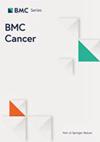Multi‑omics identification of a signature based on malignant cell-associated ligand–receptor genes for lung adenocarcinoma
IF 3.4
2区 医学
Q2 ONCOLOGY
引用次数: 0
Abstract
Lung adenocarcinoma (LUAD) significantly contributes to cancer-related mortality worldwide. The heterogeneity of the tumor immune microenvironment in LUAD results in varied prognoses and responses to immunotherapy among patients. Consequently, a clinical stratification algorithm is necessary and inevitable to effectively differentiate molecular features and tumor microenvironments, facilitating personalized treatment approaches. We constructed a comprehensive single-cell transcriptional atlas using single-cell RNA sequencing data to reveal the cellular diversity of malignant epithelial cells of LUAD and identified a novel signature through a computational framework coupled with 10 machine learning algorithms. Our study further investigates the immunological characteristics and therapeutic responses associated with this prognostic signature and validates the predictive efficacy of the model across multiple independent cohorts. We developed a six-gene prognostic model (MYO1E, FEN1, NMI, ZNF506, ALDOA, and MLLT6) using the TCGA-LUAD dataset, categorizing patients into high- and low-risk groups. This model demonstrates robust performance in predicting survival across various LUAD cohorts. We observed distinct molecular patterns and biological processes in different risk groups. Additionally, analysis of two immunotherapy cohorts (N = 317) showed that patients with a high-risk signature responded more favorably to immunotherapy compared to those in the low-risk group. Experimental validation further confirmed that MYO1E enhances the proliferation and migration of LUAD cells. We have identified malignant cell-associated ligand–receptor subtypes in LUAD cells and developed a robust prognostic signature by thoroughly analyzing genomic, transcriptomic, and immunologic data. This study presents a novel method to assess the prognosis of patients with LUAD and provides insights into developing more effective immunotherapies.基于恶性细胞相关配体-受体基因的肺腺癌多组学特征鉴定
肺腺癌(LUAD)是导致全球癌症相关死亡率的重要因素。LUAD 肿瘤免疫微环境的异质性导致患者的预后和对免疫疗法的反应各不相同。因此,临床分层算法对于有效区分分子特征和肿瘤微环境、促进个性化治疗方法是必要且必然的。我们利用单细胞RNA测序数据构建了一个全面的单细胞转录图谱,揭示了LUAD恶性上皮细胞的细胞多样性,并通过一个计算框架和10种机器学习算法确定了一个新的特征。我们的研究进一步探讨了与该预后特征相关的免疫学特征和治疗反应,并在多个独立队列中验证了该模型的预测功效。我们利用 TCGA-LUAD 数据集开发了一个六基因预后模型(MYO1E、FEN1、NMI、ZNF506、ALDOA 和 MLLT6),将患者分为高风险组和低风险组。该模型在预测不同 LUAD 群体的生存率方面表现出了强劲的性能。我们在不同风险组中观察到了不同的分子模式和生物过程。此外,对两个免疫疗法队列(N = 317)的分析表明,与低风险组相比,具有高风险特征的患者对免疫疗法的反应更佳。实验验证进一步证实,MYO1E 能增强 LUAD 细胞的增殖和迁移。我们确定了LUAD细胞中与恶性细胞相关的配体-受体亚型,并通过全面分析基因组、转录组和免疫学数据建立了一个强大的预后特征。这项研究提出了一种评估 LUAD 患者预后的新方法,并为开发更有效的免疫疗法提供了启示。
本文章由计算机程序翻译,如有差异,请以英文原文为准。
求助全文
约1分钟内获得全文
求助全文
来源期刊

BMC Cancer
医学-肿瘤学
CiteScore
6.00
自引率
2.60%
发文量
1204
审稿时长
6.8 months
期刊介绍:
BMC Cancer is an open access, peer-reviewed journal that considers articles on all aspects of cancer research, including the pathophysiology, prevention, diagnosis and treatment of cancers. The journal welcomes submissions concerning molecular and cellular biology, genetics, epidemiology, and clinical trials.
 求助内容:
求助内容: 应助结果提醒方式:
应助结果提醒方式:


